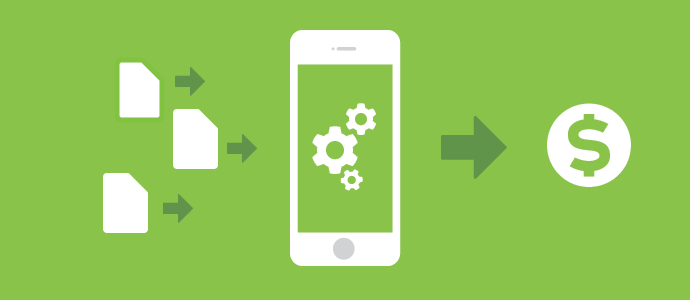Plenty of companies I know struggle with how data science can give them a competitive edge. There are two areas where data science can help almost every company—improving the sales forecast and improving the effectiveness of the sales team. I'm going to touch on the first of these today.
With multiple data sources and data exhaust (the real-time data that streams automatically from users as the go about their day I mentioned in my last post), data scientists can apply sophisticated statistics and machine learning to deliver insight that help sales teams close deals faster. But what data matter the most?
What delivers greater value: CRM data or data exhaust?
I doubt most companies know, but I'd say that in head-to-head competition between CRM data and data exhaust, data exhaust wins for two reasons. First, sales professionals hate updating CRM systems, and second, data provided by people is subject to their memories and—I have to say it—biases.
Data exhaust, on the other hand, is the factual recording of what actually happens at every moment of the day. Scheduling a meeting with your prospect and including the economic buyer, receiving an attachment in an email with the results of your product evaluation, or having a strategic session with an executive—all things a person does to close a deal—are recorded in email, calendar, and notes. By applying data science to this data exhaust, you get perhaps the most reliable insights to guide the rest of your sales process.
Does something about CRM stand in the way of good data? Yes!
Typical knowledge systems (CRM included) follow the "pain now, pay me later" model where employees are asked to part with knowledge they own in exchange for the unknown, unquantifiable benefit of some future use. Their reluctance to spend the time and share details shows up as poor data quality. Because most sales reps just want to sell, they don't mind having 10 meetings with a prospect to move a deal forward. However, they don't want to spend time on administrative tasks like updating a CRM. And as time passes, memory fades. So even when they finally take the time and actually try to make their documentation accurate, it is simply not going to be a complete reflection of reality.
The hidden magic of data exhaust
In sales, every company, product group, manager, and rep has his or her own way of selling. To keep sales motivation and engagement levels high, it's tremendously important to let reps work the way they want (as long as management can also get what they need). So rather than rely on poorly maintained, after-the-fact record keeping, it's more accurate to apply data science to the data exhaust from sales teams' daily work. After all, they are super motivated to get their work done, and the exhaust is a byproduct of their daily activities.
Putting insight into the hands of those in the field
The obvious challenge is that the data exhaust that sales professionals leave behind is far more diverse and individual than you would imagine. You have to capture it and then extract meaning. That's why sales data need incredibly sophisticated knowledge extraction methodologies—like those we use at Clari—together with the best machine learning algorithms to derive insights for sales productivity.
As we move forward, our goal is to continually uncover sales knowledge and put it into the hands of sales professionals. In follow-up posts, we will explore how we employ data science to solve large and small sales challenges and answer questions businesses have about improving sales productivity.



